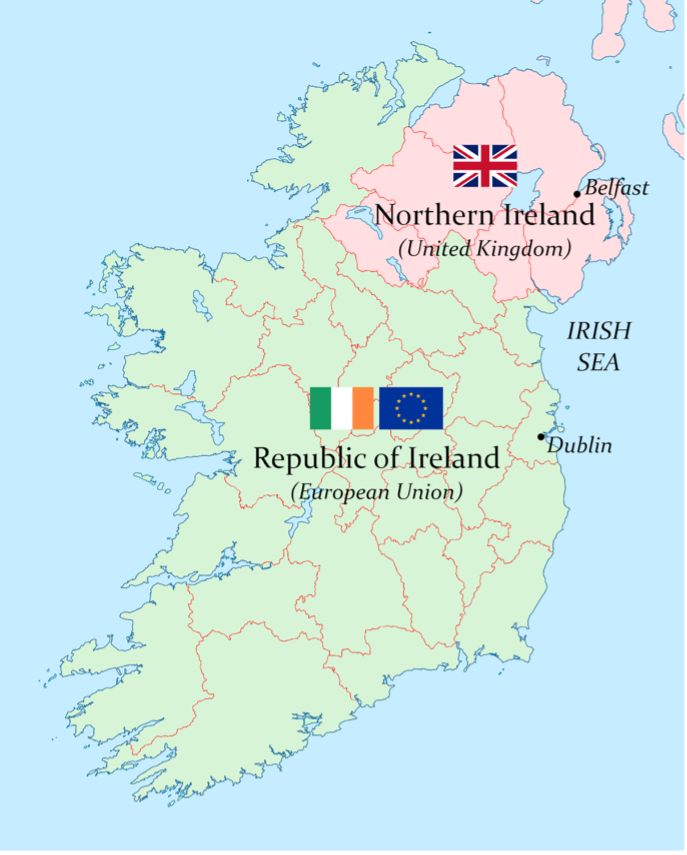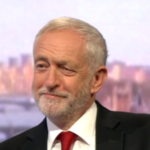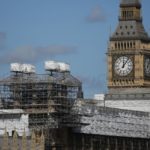
Nearly seven years since the 2016 EU Referendum vote, it seems almost unbelievable that Brexit continues to make front-page news. However, despite Boris Johnson declaring that he had ‘Got Brexit Done’, there was a complex issue that was hidden amongst the constant stream of dialogue and arguments over Britain’s exit from the EU, one that was not going to be resolved quickly. The Northern Irish border with the Republic has stumped British policymakers during the ‘Brexit era’, which in part has to do with the complex geopolitics at play in the region, but is also the result of British politicians’ general lack of understanding about the history and current political situation in Ireland. At last, Rishi Sunak seems to have made a breakthrough with this so-called ‘Northern Ireland Protocol’, which sets out what will happen along the Northern Irish border with the Republic now that the UK has left the EU. However, almost seven years after the 2016 EU referendum and over three since Britain officially exited the EU, this decision feels like a long time coming for many people, and many are cautious about whether it will come to fruition.
In post-Brexit Britain, a protocol for the Northern Irish border with the Republic was essential. Northern Ireland left the EU at the same time as the rest of the UK, but the Republic of Ireland remains an EU member state. Thus, the border between the Republic and NI became more than a border between these two territories, but also a border between the European Union and the United Kingdom. Something had to be done about this, as goods could not be allowed to flow freely between Britain, Northern Ireland, the Republic and the EU like before, as the UK was no longer part of this political grouping. A border had to be drawn somewhere, but there was no easy solution to this.
Unlike relations between the UK and other EU member states, the situation in Northern Ireland is much more complex. A border does not just mean a border, but rather can serve as a political symbol which could seek to reignite civil discontent and political violence. It does not just represent trade barriers and restricted movement of people, but could seek to undermine the identities of entire regions. For republican communities it is crucial that their Irish identity is not questioned, and any further steps to isolate Northern Ireland from the rest of Ireland is an unsavoury option for them. However, for unionist communities it is imperative that Northern Ireland’s union with Britain is not undermined, and nothing is done to question the Britishness of those who identify as such within Northern Ireland.
A hard, land border was an unthinkable option, as this would have undermined the 1998 Good Friday Agreement which brought a relative end to decades of violence in Northern Ireland. Then, the British government landed on the deal which was enacted when Britain left the EU in January 2020. What was originally agreed to prevent a hard border was that checks on goods would be carried out between Great Britain (England, Scotland and Wales) and Northern Ireland in Northern Irish ports. Also, it was decided that Northern Ireland would continue to comply with EU product standards, in order to make the movement of goods entering into the Republic of Ireland easier. This essentially created a border in the Irish Sea between Great Britain and Northern Ireland, and there was not widespread agreement over this, meaning that revisions had to be made. The DUP stated that this agreement served only to separate Northern Ireland from the rest of the UK, undermining its position within the union. For unionist politicians, this was unacceptable. The DUP were so incensed by this decision that they refused to participate in the reconvening of Northern Ireland’s devolved government until the British government took action to rectify this ‘mistake’. Despite dropping down to second largest party in Stormont in the wake of the May 2022 elections which brought Sinn Féin to victory, the power-sharing nature of their parliament meant that Sinn Féin could not form their new government without the DUP’s consent. This has led to nine months of political gridlock, and demonstrated that this version of the Northern Ireland Protocol was unviable.
So once again, it was required for the British government to work with both the Irish government and the EU to seek a conclusion. The recommencement of this dialogue was delayed, despite the growing political vacuum in Northern Ireland, due to Westminster’s own deepening political crisis. Boris Johnson had committed himself to revising the Northern Ireland Protocol and seeking a deal that worked for all, but then had to resign. Liz Truss’ premiership was like no other, with her being preoccupied with the nose-diving economy and then having to resign 49 days later. Rishi Sunak has now again taken up the challenge of solving the problems with the protocol once and for all, over three years after the Brexit deal and the NI Protocol came into effect.
Now it seems that Sunak has come up with a plan that is a viable option for all. His two-lane system for goods entering Northern Ireland will avoid excessive checks on products entering from the rest of the United Kingdom, whilst making sure that sufficient checks are carried out on products going into the Republic of Ireland and into the EU. This is only the beginning for Sunak’s proposed deal and there may be a long road ahead to get parliament’s approval, but talks with the EU and the governments in Northern Ireland and the Republic have so far been promising. Finding a solution to the Northern Irish border issue was never going to be easy, nor should it be. A border does not just mean a border, but rather evokes memories of painful periods in Northern Ireland’s history. It does not serve as a stop for goods and products, but can represent the undermining of the identities of entire communities. Northern Ireland and its people have suffered excessively as a result of sectarian conflict, and it is crucial that decisions are made with all communities in mind.



Average Rating